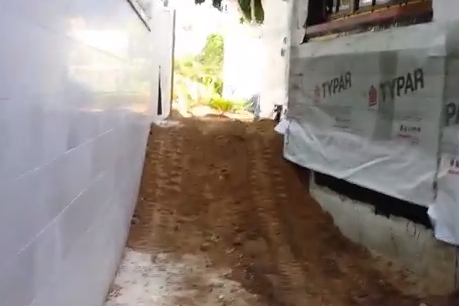Professional Watershaping
I've been working with digital design technology for nearly ten years at this point, and I have to say that the rate of change with both the software and the hardware has been rapid enough to make a casual observer's head spin. And that's fine, because those of us who've been involved with it from the beginning have come to expect no less. In my case, however, I didn't start out with computer design. In fact, I'd been working as
I grew up in my father's pool business - a successful design/build firm based in Henderson, Nev. Even in high school, I was consciously preparing myself to get involved on the design side of things and had signed up for a drafting class to start developing the requisite drawing skills. But something big was happening in the late 1990s: I was all set for my drafting class and had equipped myself with the tools I'd need
I followed a well-worn path when I started designing watershapes: I acquired a drafting table and worked at gaining proficiency in the use of pencils, protractors, scales, squares, various templates, colored markers and a multiplicity of other drawing tools as a means of communicating design ideas to my clients. To this day, I have great admiration for those who work quickly and decisively with these tools, but about ten years ago I was introduced to an array of digital design systems - and I've been
Many times in the past 15 years, articles published by WaterShapes have referred to water as "the main ingredient" when it comes to pools, spas, fountains, ponds and all of the other forms of contained, controlled water. I'm willing to accept that assertion and have probably offered it myself a time or two. Here, however, I want to
It's been a while since I shared a video with you through WaterShapes.com, but it occurred to me (even after a good, long gap) that this one fit perfectly into the series we once offered on the subject of site access and the ways equipment and the products of demolition and construction can be moved from place to place under
‘As watershape designs have become more creative, more competitive and ultimately more valuable to our clients than we once were, it’s natural that we have started paying more attention to protecting our output.’ That’s how Brian Van Bower began in his July 2008 Aqua Culture column. He continued: ‘This is indeed a large and important issue for many people in our business, virtually to the point where watershapers are now facing the same sorts of concerns that have preoccupied architects and landscape architects for decades. And we’ve caught up with our colleagues at
‘What’s the use of knowing about history?’ That’s the question Mark Holden asked to start his Currents column in the July 2008 issue. ‘For many of us, the answer to that question seems so obvious that it comes as a shock to find out just how many people in the watershaping and landscape fields don’t grasp the all-encompassing significance of our collective past – but it shouldn’t. ‘Using my own career as an example, . . . I confess that I waltzed through more than a few early years as an aspiring landscape architect and watershaper in blissful ignorance of the history of



















